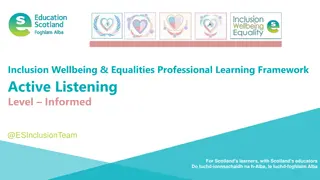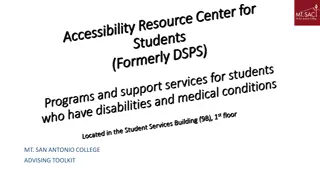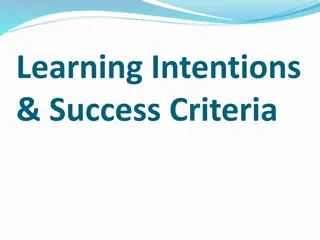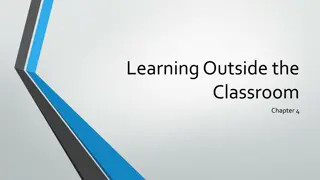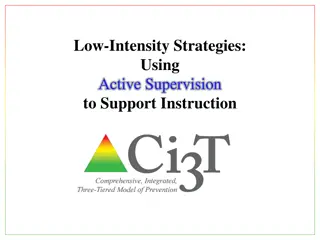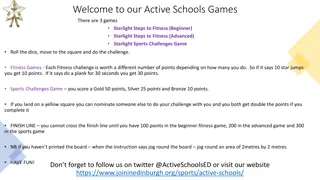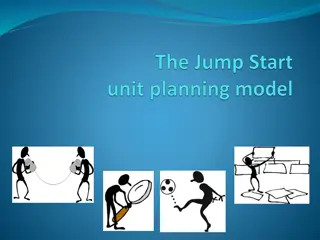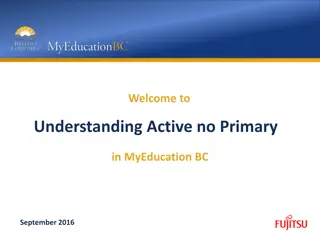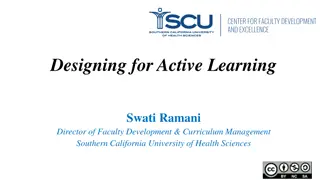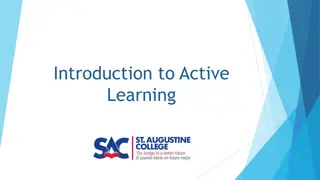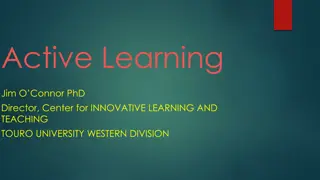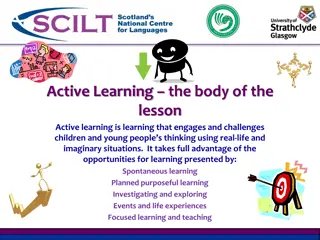Active Learning Strategies for Academic Success
Engage in active learning by participating in class, preparing effectively, and utilizing note-taking formats like Cornell and Outline methods. Develop valuable skills such as collaboration, communication, and time management to enhance your learning experience.
Download Presentation

Please find below an Image/Link to download the presentation.
The content on the website is provided AS IS for your information and personal use only. It may not be sold, licensed, or shared on other websites without obtaining consent from the author.If you encounter any issues during the download, it is possible that the publisher has removed the file from their server.
You are allowed to download the files provided on this website for personal or commercial use, subject to the condition that they are used lawfully. All files are the property of their respective owners.
The content on the website is provided AS IS for your information and personal use only. It may not be sold, licensed, or shared on other websites without obtaining consent from the author.
E N D
Presentation Transcript
Getting the Most from Class Chapter 7
Become Engaged in Learning Practice techniques of active learning Talk with others Ask questions in class Study in groups Seek out information beyond lecture material and required reading Explore other information sources How does the material relate to your own life?
Become Engaged in Learning (continued) Helps develop valuable skills Collaboration Communication Independence Time management Flexibility
Prepare for Class Do assigned reading Pay careful attention to the course syllabus Make use of additional materials online Warm up for class by quickly reviewing Get organized
Participate in Class Participation is the heart of active learning Listen critically and with an open mind Be ready for the message Listen to main concepts and central ideas Listen for new ideas Repeat mentally Determine the importance of what you hear Keep an open mind Ask questions Sort, organize, and categorize
Participate in Class (continued) Speak up Sit close to the front Focus on the lecture and class discussions Raise your hand when you don t understand Speak up in class Never worry that you re asking a stupid question Don t bluff If you recently read something relevant, bring it in
Note-Taking Formats: Cornell Format Create a recall column Write only in the wider column as your take notes Use the recall column for main ideas and important details when going back through notes
Note-Taking Formats: Outline Format Roman numerals for main ideas Uppercase letters for ideas related to main ideas Arabic numerals and then lowercase letters for descending levels
Note-Taking Formats: Paragraph Format Write summary paragraphs as you take notes Might not work well for class notes
Note-Taking Formats: List Format List terms and definitions List facts List sequences Easy to use with the Cornell Format
Note-Taking Techniques Identify main ideas Don t write down everything Don t be thrown by a disorganized lecturer Keep notes and supplementary materials for each course separate Download notes, outlines, diagrams, charts, and graphs and bring them to class If handouts are distributed, label them and place them near your notes
Taking Notes in Nonlecture Courses Always be read to change note-taking methods based on the situation Record information presented by both the instructor and classmates Consider all reasonable ideas The way you organize notes depends on the purpose or form of the discussion
Taking Notes in Science and Mathematics Write down equations, formulas, diagrams, charts, graphs, and definitions Write instructor s words precisely Use standard symbols, abbreviations, and scientific notation Write down all worked problems and examples step by step
Review Your Notes Forgetting curve Decline of memory over time We forget much within twenty-four hours Strategies for remembering important details: Write down main ideas Repeat your ideas out loud Review notes from the previous class just before the next class session
Comparing Notes Benefits of comparing notes: Probably take better notes See if notes are clear and organized See whether you agree on what the most important points are Take turns testing each other
Class Notes and Homework Once you have reviewed your notes, use them to complete homework assignments Do a warm-up for your homework Do any assigned problems, and answer any assigned questions Don t give up too soon Complete your work


